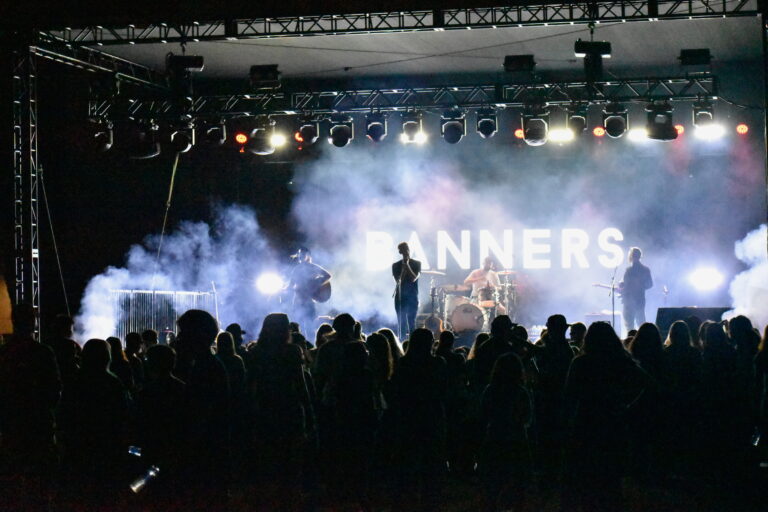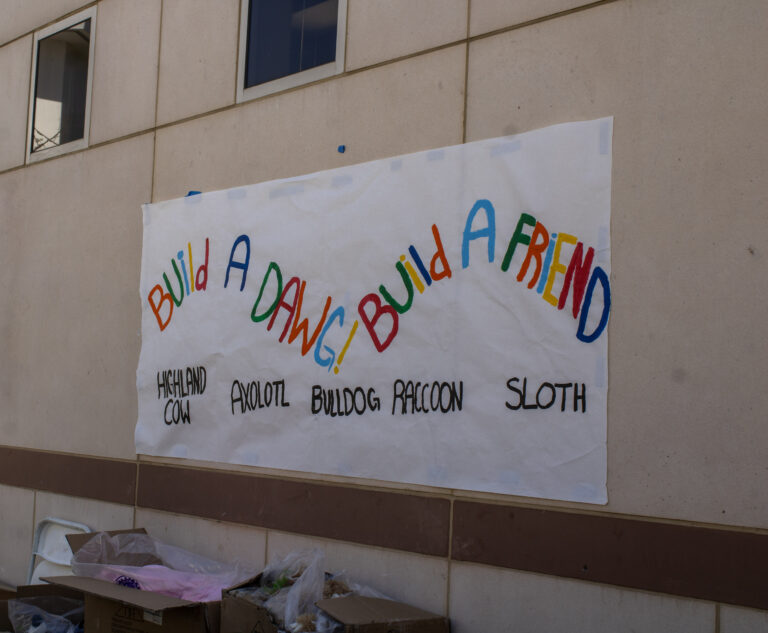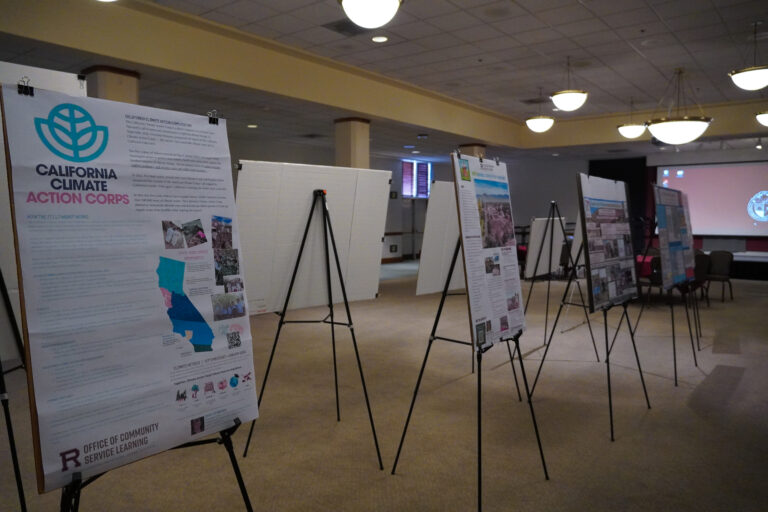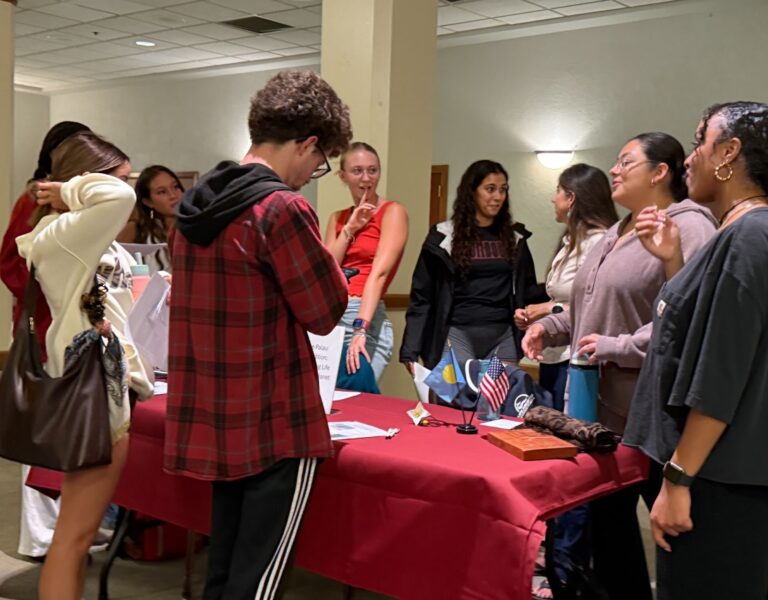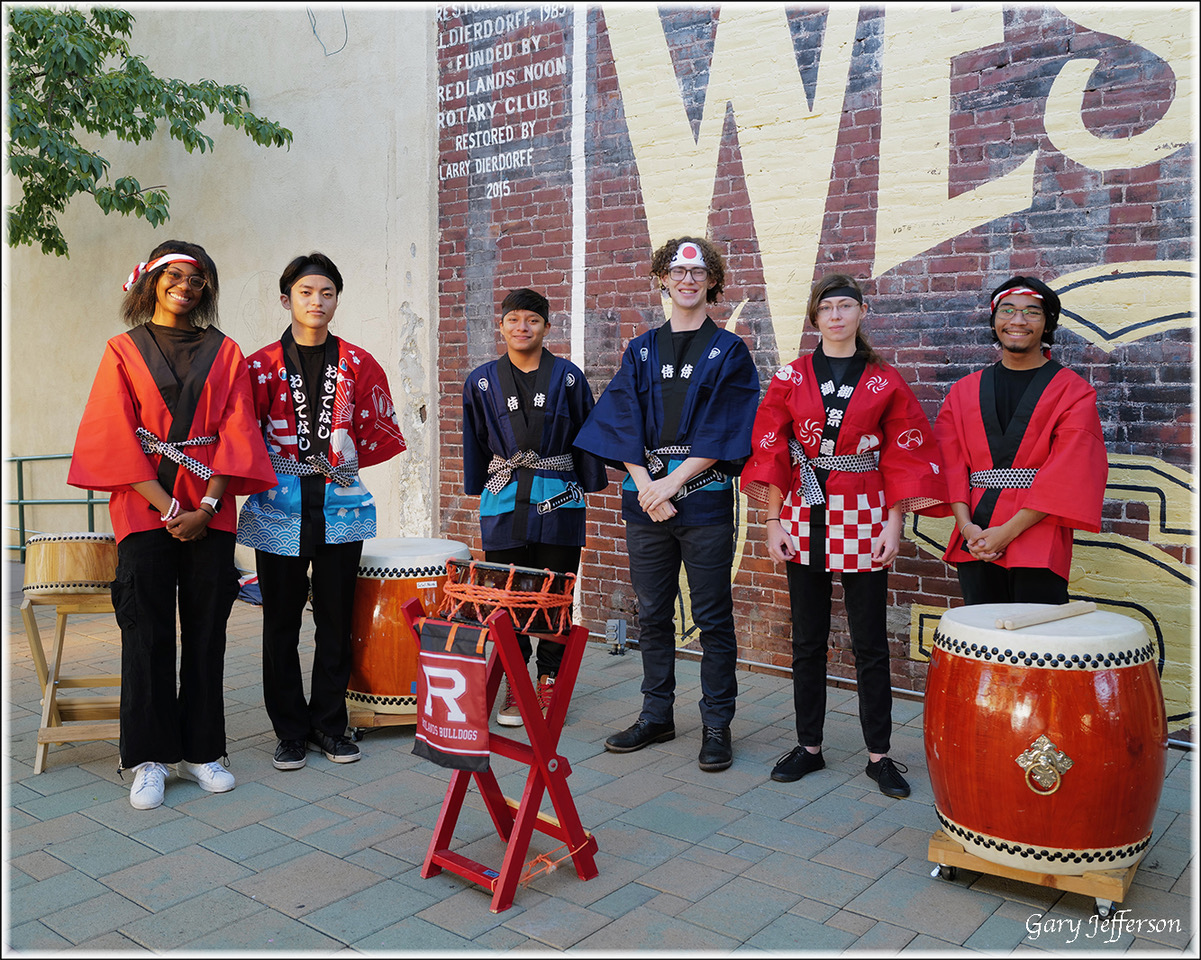
The foreign language requirement at the university is the reason many students study a language other than English before graduating. While the classes are great opportunities to learn a new language, it is harder for students to find opportunities to learn the culture and customs as well. For students passionate about learning the Japanese language in particular, the Taiko group provides a way for those interested in exploring these secondary aspects of Japanese culture.
Professor Dr. Masako Nunn, who created the Taiko group explains why she saw the need to form it. “Taiko is very dynamic, powerful. Students, I thought, can learn spirit, Japanese culture too,” she says. “Fortunately I was granted an award, a grant for Japanese classes, inviting an instructor and that’s how I started. Then some students really showed they’re very interested and we started to form the group.”
She goes on to clarify, “It’s not a club yet: it’s a group of students who are really interested in learning more. ”
“Right now we’re still a fairly small group of seven people, all of which are associated with the Japanese language courses one way or another,” explains Derek Dimalanta ‘24. “Though should we be able to get more drums or perhaps officialize ourselves with the university, we do plan on opening up to far more members than just what we have currently available.”

The link between language and culture is one Dr. Nunn believes is crucial for a comprehensive experience in higher education.
Dr. Nunn stresses the importance of having a holistic experience with learning a language. “I think music really gives inspiration, encouragement, hope to people,” she says. “Students learn language, but they need to learn culture as well. For that reason, I wanted to add that cultural aspect in learning Japanese.”

Although learning a new instrument is challenging, members of the team were quick to point out ways it was different from their past experience with music. Zoe Anderson ‘25 says, “We just started meeting Tuesday nights every week, just for one hour of practice, and we’d start to learn new songs. It was a slow start, but we were learning the basics of Taiko and we were learning a new instrument so it was a little difficult but it was really fun.”
Anderson explains the shallow learning curve of Taiko made integrating it in her normal routine much easier. “I never saw myself playing with a group at Redlands, especially an instrument that I didn’t know, so it was fun to just try things out, try something new,” she says. “It’s been a lot of fun to just have this little area with my friend group.”
Dimalanta emphasizes the differences between Taiko drums and other musical instruments: “Taiko, as my first drum type instrument, evokes a lot more emotion and passion in me than it does in my previous musical experience. I have piano and violin to thank for introducing me to music theory and sheet music, not that Taiko requires that, but playing Taiko definitely makes me happier than it has been with prior musical experience. ”

Dr. Nunn mentions another way in which the grant has helped the team. “I invite a professional instructor from UC Riverside, she comes every other Tuesday, and the students who have been practicing and have been coming, they work together,” she says. “Students who have been practicing can help the new one to help practice. Every other Tuesday, students practice on their own, and every other week the instructor comes.”
Anderson explains the benefits to having an instructor biweekly rather than at every practice. “There’s not too much pressure on us, because it’s self led half of the time.”
“This turned out to be a very good method of being able to practice on our own with everyone and learn with everyone,” she says. “It gives us time to basically prioritize whatever we want during half of those sessions. A lot of time in music you feel like you’re forced to meet everybody and you’re forced to catch up. But with our group, we just take our time.”
Anderson points out the ways in which this creates a relaxing environment where the group feels comfortable cracking jokes with each other between breaks, getting to know each other, and even improvising to some extent when practicing. “The team dynamic is pretty relaxed,” she says. “We decide how hard we want to work, and it doesn’t feel like extra stress a lot of the time.”

Because new members are coming in every year, experienced members become mentors to those entering with no prior experience. “When it comes to teaching other people, I try my best to learn more effective means of passing on that sort of knowledge in a way that they understand as opposed to how I think of it,” Dimalanta notes. “It comes to me through instinct, but for someone else I feel like I need to bridge the gap and find an understanding in a way that works for them the same way it works for me.”
Anderson explains the priorities of the team when practicing, “We all work together to try and improve ourselves, improve the group, get everybody on the same page so we don’t let anybody stay behind.”
She adds, “most of us have music experience but some of us more than others, but we all try and stay together as one group and not leave people behind.”

Moving forward, Dr. Nunn mentions she would like for more members to join the team and allow for its continued growth. She explains, “Right now we do have six practice drums, two professional drums, and then a small one. So altogether I have nine Taiko drums. So I can have nine players.” However, some of these drums are borrowed from outside groups rather than permanent to the university team.
Because the number of players is limited by the amount of Taiko drums the team has, another goal of Dr. Nunn’s is getting more drums.
“I need to buy more Taiko drums, Taiko drums are very expensive,” she said. “I applied for the grant to purchase Taiko drums so if I am awarded the grant, I’d like to buy one more Taiko drum.”

Dr. Nunn attributes the recent worldwide popularity of Taiko to a broad increase in visibility and popularity of Japanese culture. She mentions, “When you talk about Japanese culture, anime, manga, and food culture; according to the statistics, worldwide, Japan is the country most visited by foreigners.”
According to Anderson, all members of the group are part of the Asian Studies program one way or another, with most members having heard about Taiko from Japanese courses. She elaborates, “We all have that one connecting part so we’ll speak in Japanese during practices quite often, we’ll count in Japanese, and greet and say goodbye in Japanese, so it makes a pretty cool environment that everyone has that connection”
“The teamwork really comes down to we also all love music,” she says. “With Taiko specifically, it’s a lot about timing and being able to feel like you’re on time with everyone else, and once you are on time everything just syncs together and it sounds perfect. ”

Part of the team’s appeal comes from the sense of togetherness that comes with the practice. Being alongside each other on a stage, feeling the vibrations of the drums throughout your body, and the sense of accomplishment that accompanies getting the timing just right. “It’s a very cathartic feeling being able to put your strength into something and express it through a very invigorating sound,” Dimalanta says.
Despite its small start and the limitations brought by the cost of drums, the Taiko group has grown to become a close group, emphasizing not leaving anyone behind. The group intertwines linguistic, cultural, and musical aspects to create a more comprehensive experience for both the team and those who enjoy their performances.
Photos by Manuel Magallanes.

